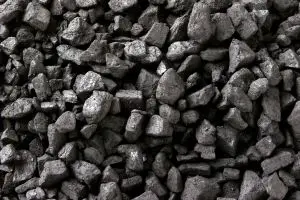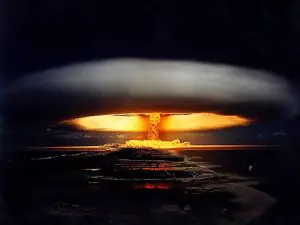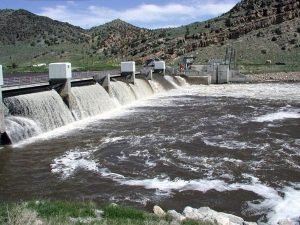As industries grow and people become more and more aware of the extensive use of energy around them there have been several advancements in the field of energy. Scientists have spent their life’s work on developing new forms of energy and devising ways to harness and contain that energy.
List of 10 Important Energy Sources
While there are numerous forms of energy available, not all of them are easily recognizable. Here are 10 important sources of energy that are described below.
#1 Petroleum
Petroleum is most often associated with the gas that is put in our cars; however, petroleum is the broader realm of crude oil. Some advantages of petroleum are that components of petroleum are used to make paints, it is a compact and portable source of energy, it is able to withstand high temperatures and is excellent for motor oils or grease and it is still the most economical energy source available. On the flipside, there are many disadvantages to using petroleum energy. There is a shortage of petroleum and the remaining oil is located in areas that are considered to be politically unstable, it produces carbon monoxide and is being perpetrated as the culprit for global warming and the transportation of oil across continents is becoming increasingly more difficult.
Petroleum#2 Coal
Coal is a fossil fuel that has to be mined and has been used as an energy source for years. There are advantages to using coal, such as: it is abundant and inexpensive, it is versatile, power based on coal is not dependent on weather and coal can be safely stored. Disadvantages include ruined habitats due to strip mining, it is dangerous to mine coal underground and it is being quickly depleted.

#3 Nuclear Energy
Nuclear energy is the energy that is released when nuclear fission occurs. This is becoming a popular form of energy. Nuclear energy is a viable alternative to fossil fuels and it is an inexhaustible fuel source.

Disadvantages include the misuse of nuclear energy to create mass weapons of destruction, nuclear waste is generated and containment is not yet efficient and accidents occurring at nuclear power plants can be much more catastrophic in nature.
#4 Wind Energy
The wind can also be used to harness energy and produce effective results. Many find this form of energy to be very advantageous. Those reasons include: it does not create air pollution, the wind turbines only need a small area to be built, it enables areas that cannot easily access electricity to do so by harnessing the wind and wind turbines are available in several sizes to fit any need.

While there are many proponents for wind energy, there are several disadvantages. Wind is not constant and therefore the energy is unreliable, the wind farms are unsightly and can be noisy.
#5 Solar Energy
Solar energy is simply the energy created from the sun. Advantages of solar power include: no pollution from gathering solar power, it can be used in very remote areas and solar energy will never run out as long as the sun shines. Demerits of solar power would be it can only be collected when the sun is shining, collection containers, solar panels and solar cells are expensive to purchase and install and generally large areas of land are needed without obstructions to collect the energy.
#6 Hydroelectric Energy
Hydroelectric power has been used for years and is once again gaining popularity. Water is used to create energy. This form of energy has its advantages, such as electricity is generated at a constant rate, dams can be operational for decades and no green house gases are produced to pollute the air. Hydroelectricity also has its disadvantages that include the high cost of building a dam, areas near the dam are flooded and the natural environment is destroyed and the natural water table is disturbed. Here is our article on hydroelectric power, its advantages and disadvantages.

#7 Geothermal Energy
The basis behind geothermal energy is to use the Earth itself to create an energy source. This is a relatively new concept. Benefits of geothermal energy includes: it is renewable, it does not produce pollution or contribute to the greenhouse effect and also does not require secondary energy resources to fuel the power houses. Disadvantages of geothermal energy include power stations must be placed strategically and in the correct place, geothermal sites have been known to go cold and no longer produce energy and there is the potential that hazardous gases will also be released into the environment.
#8 Tidal Energy
Tidal energy is exactly what it sounds like and it has not attracted a significant amount of attention as a renewable energy source. There are several benefits of tidal energy. These include: it is renewable and cannot be depleted, it is one of the most efficient energy sources and the tides are predictable therefore making the energy source reliable. Disadvantages include: high costs upfront to build tidal power plants, the energy is only created during tidal surges and the power plants could lead to significant environmental damage.

#9 Radiant Energy
Radiant energy basically encompasses all energy that is found in electromagnetic waves. Advantages of radiant energy include: it is relatively cheap to set up and it is easy to use on a small scale. The main disadvantage of radiant energy is not efficient for large amounts of energy.
#10 Compressed Natural Gas
Compressed natural gas or better known as CNG is one of the most viable alternative fuel options available. Advantages of CNG include: it is less expensive than gasoline, it is eco-friendly and it makes engines more efficient. Disadvantages include: special tanks are needed and CNG filling stations are few and far between.

it gives you every meaning in every paragraph